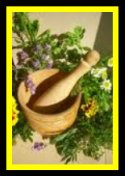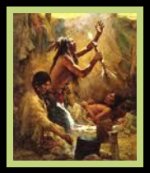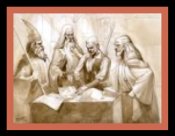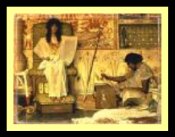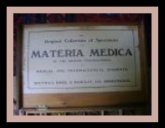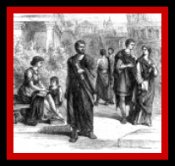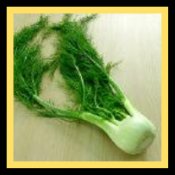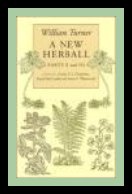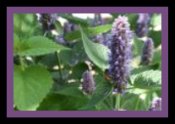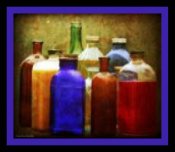|
History of HerbsThe History of Herbs is very important to me. I know it will be to you too. It's amazing to me how the early people would even think to use the plants for medicinal purposes, in cooking, as a perfume, etc. Much less to be the person that was the "guinea pig" for all this exploration. I think we need to take our hats off to these people and thank them, because if it hadn't been for their knowledge and bravery, we would not be where we are today. I've been interested in herbs, spices, and oils for about 30 years now. When I had my business "Sweetwater Rose", I sold over 50 different dried herbs and spices, and over 25 different oils. I sold soaps, shampoos, lotions, and many other products that all contained some type of herb. I think it is ironic how 30 years later and I am still involved in herbs. I have read many books about the history of herbs and have done a lot of research. I hope you enjoy my take on the "History of Herbs".
**History of Herbs Herbs have been around for many many years. Even before any records were kept. Through trial and error man found which plants were good to use and which ones were poison. That being said, the results were not always good. The undesirable results did not override the good results. That is a good thing, because we would not have the medicine that we have today.
Through the History of Herbs I read that the people were very superstitious about herbs. So, an abundance of stories, some true, some not, were spread all over the area. Some people ate leaves or berries from certain plants that would produce hallucinogenic effects. With this and of course the "medicine men" and the "wizards", the superstitions stayed alive.
**Bible Days** The Hebrews used a lot of herbage. They ate it as an actual food not a flavoring. The only plant that was used as a painkiller was the "Mandrake Root". Through the History of Herbs, I found that the Hebrews knew that there were other plants that healed, but they believed that to use them would be interfering with God's work. This idea soon changed and the prophets declared that the ability to heal had been given to the physicians in return for their prayers. The Middle East is where most of the herbs originated. The thymes, sages, mints, and marjorams. Also, rosemary, and hyssop. Coriander and cumin came from Egypt.
In Babylon, around 2000 B.C., the first written records, about herbs, was discovered. The documents discribed the tests that were done to find the healing powers of many herbs. They also included how to prepare each plant and what dosage to give. **The Egyptians** The Egyptians were the ones who started importing herbs, spices, and oils from Babylon and India. Anise, caraway,fenugreek, opium, thyme, saffron, and many others were in great demand. Not only did they use these for food, medicines, cosmetics, and perfumes, but they were also use for dyes, disinfectants, and embalming, which was a highly skilled art during this time period.
**The Greeks** Next the Greeks decided they wanted to know more about these amazing plants. They took the testing even further. **Hippocrates** Hippocrates, (the "Father" of medicine) and a great teacher, taught his students all about what herbs could do. From taking care of pain to curing diseases. What he taught and practiced was the basis of our medicine today.
**Dioscorides** In the first century, a Greek physician named Dioscorides documented more than 500 plants in a book called the "Meteria Medica". This book was used for many years.
**Galen** A hundred years later a physician named Galen wrote numerous medical books which were used for 1,500 years. He used herbs for a lot of his treatments.
**The Romans** By the time the Romans took over Europe, they knew much about herbage. They believed in the healing powers so much that they carried the seed and plants with them wherever they went.
They gave Britian information on over 200 different plants. Some of them were..parsley, rosemary, thyme, fennel, and sage. During the time that the Romans had control, they took such good care of there plants, they naturalized and now they grow wild. **Christians** When the Christian chuch became a part of Britian, monasteries were formed. The plants that the Romans left became the "physick" gardens which the "monks" took care of.
These monasteries were the backbone of learning and medicine. They became very popular for their herbal healing processes. Still there was a lot of herbal folklore in many of the towns and villiages. While all of this was going on, there was very little being documented. It was past down through word of mouth.
**New Herball** In 1551, Steven Mierdman published the first part of William Turner's "New Herball". Much of the information had come from the Greeks and Romans. It told about more than 238 plants and was the first scientific study that was done. Two of the most famous herbalists were John Gerard and Nicholas Culpeper, who were both English. **Gerard** In 1597 John Gerard wrote his well known "Herball". He got most of his data from a Flemish physician named Dodoens. Gerard included an abundance of information on plants growing in America, the new land. He called the tomato the "Apple of Love".
**Culpeper** In 1653 Culpeper, also a physician, wrote an herbal in which his writings did not agree with what Gerard had written. He made up all kinds of stories about the powers of herbs. He connected herbage and astrology to the point that he ruined his reputation. **Monardes** Monardes wrote the first herbal in America. It was published in 1569. Monardes was a Spanish doctor. He wrote about the plants that the early settlers had found. The early settlers had seeds and roots. The plants grew strong and soon became native to the area. Some of the plants they had were comfrey, yarrow, and chamomile.
The friendly Indians showed the settlers many new plants. **Shakers** The growing of herbs reached its highest point when the Shakers, a small religious group that based it's economy on agriculture, took over growing and selling medicinal herbage on a grand scale. They grew over 150 varities. Some of the high quality plants included basil, marjoram, sage, hyssop, and thyme. They turned the herbs into ointments, pills, and powders. The Shakers lasted over 100 years. **Changes** Even though herbs were popular in America, the same was not true in Britian. The "Industrial Revolution" took the people out of the fields and into the towns looking for work. Homes had little or no garden space. The use of herbs in cooking and for medicinal purposes went down as "patent" medicines and table condiments became what the people wanted. Through the History of Herbs, I have also learnd that in Europe the use of herbs was still very popular. Plants grew wild. The people of France and Italy began to grow herbs on a large scale. Herbage was imported at a low cost by Britian. Some culinary herbs were available, but the quality was not good. Soon the people only used the familiar ones, thyme, parsley, sage, and rosemary.
With the advancement of scientific knowledge, soon drugstores came along. Even with all of these changes, the knowledge and use of herbs has survived. **Revival** "They" say that
history repeats itself and I believe that's true, because in the past 30 years, herbs have made a comeback, not only here in America, but, everywhere else too. The interest in cooking has awakened the senses and the need for natural flavorings as emerged. People are tired of the synthetics that are found in so many of our foods. Some have very dangerous side effects. The usefulness and enjoyment of herbs has brought a much needed connection back to "Mother Earth". **History of Herbs** To: Home... From: History of Herbs
|
The Cook’s Garden provides seeds & plants to bring the gardener to the kitchen and the cook to the garden. They will inspire you with their gourmet vegetables, fruits & herbs for your garden, they also have great recipes for enjoying the harvest. Visit them at www.cooksgarden.com

My Suncatchers (Sun Dance) are sold in my e-store. The picture does not do it justice. The stain glass, the beads, and the mirrors combine to create a beautiful art piece for you garden. Guaranteed to make your plants happy!
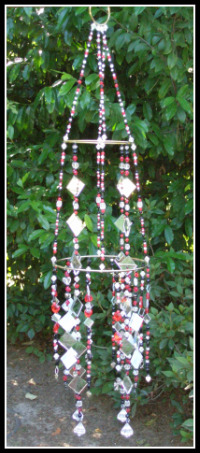
W. Atlee Burpee Company had been a leader in gardening since 1876. They provide high quality seeds, plants & supplies for your gardens. They offer a large variety of vegetables, fruits, herbs, flowers, and supplies – all guaranteed to please.





